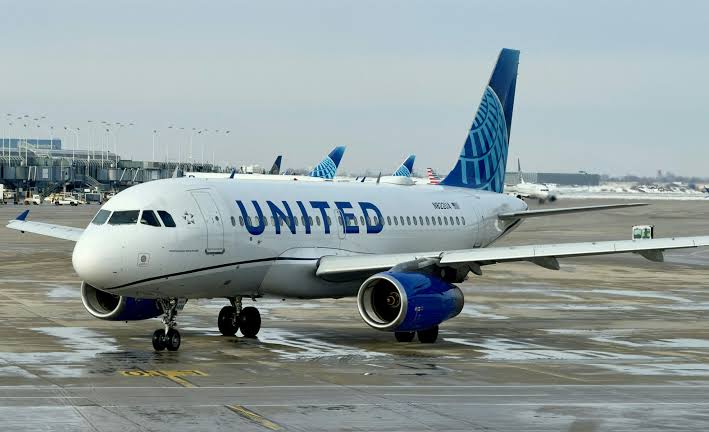Female passenger dies after ‘suffering cardiac arrest’ on flight from Colorado
A 51-year-old female passenger tragically died after experiencing a cardiac arrest during a United Airlines flight from Houston, Texas, to London’s Heathrow Airport. The incident occurred on October 5, 2022, as the aircraft was descending towards its destination. Despite prompt medical attention upon landing, the woman was pronounced dead at the scene.
Incident Overview
The passenger was traveling in the economy section of United Airlines Flight 880 when she suddenly went into cardiac arrest. Fellow passengers, including children, witnessed the distressing event. The flight departed Houston at approximately 4:30 p.m. local time on October 4 and landed at Heathrow around 7:40 a.m. local time on October 5.
Emergency Response
Upon the aircraft’s arrival at Heathrow’s Terminal 2, emergency services were on standby to provide immediate assistance. The London Ambulance Service dispatched two cycle paramedics and an incident response officer following reports of a passenger suffering a cardiac arrest onboard. Despite their efforts, the woman was pronounced dead upon arrival.
Official Statements
United Airlines expressed their condolences, stating: “A customer onboard United flight 880 today, from Houston to London Heathrow, experienced a medical emergency onboard. Medical personnel met the aircraft on arrival at London Heathrow. We extend our deepest condolences to the customer’s family and loved ones.”
The Metropolitan Police confirmed the incident, noting that the death was unexpected but not considered suspicious. They stated: “Police were called following reports that a 51-year-old woman had died on a flight arriving into Terminal 2 at Heathrow from the United States. Officers attended. The woman’s death was unexpected, it has been investigated and is not suspicious. Her next of kin are aware and a file will be prepared for the coroner.”
Cardiac Arrest in Flight: Challenges and Protocols
Cardiac arrest during flights presents unique challenges due to the confined space, limited medical resources, and the necessity for immediate response. Airlines equip their aircraft with medical kits and automated external defibrillators (AEDs) to address such emergencies. Crew members undergo training to handle medical situations, including administering CPR and using AEDs.
The effectiveness of in-flight medical interventions depends on several factors, including the timely recognition of symptoms, the availability of medical equipment, and the presence of medical professionals among passengers. In some cases, passengers with medical expertise assist in providing care until the aircraft can land and the patient can receive advanced medical attention.
Importance of Immediate Medical Intervention
.
The survival rate for out-of-hospital cardiac arrests is significantly influenced by the immediacy of medical intervention. According to studies, immediate CPR can double or triple a person’s chances of survival after cardiac arrest. Furthermore, victims shocked with a defibrillator within the first minute of collapse have a survival rate close to 90 percent.
In the context of air travel, the promptness of the crew’s response is critical. While cabin crew members are trained to handle medical emergencies, the presence of medical professionals among passengers can further enhance the quality of care provided during such incidents.
Previous Incidents and Lessons Learned
This tragic event is not isolated; there have been other instances of passengers experiencing cardiac emergencies during flights. For example, in a separate incident, a woman suffered a cardiac arrest on a British Airways flight from Buenos Aires to London. Thanks to the swift action of the cabin crew and the availability of a defibrillator, the passenger survived.
These incidents underscore the importance of equipping aircraft with essential medical devices and ensuring that crew members are adequately trained to respond to medical emergencies. They also highlight the potential benefits of having passengers trained in basic life support techniques, as their assistance can be invaluable during in-flight medical crises.
Recommendations for Air Travelers
While airlines are equipped to handle medical emergencies, passengers can take proactive steps to safeguard their health during flights:
1. Consult with a Healthcare Provider: Before traveling, especially on long-haul flights, individuals with existing health conditions should consult with their healthcare provider to assess their fitness to fly and discuss any necessary precautions.
2. Stay Hydrated: Dehydration can exacerbate health issues. Drinking adequate water before and during the flight can help maintain optimal health.
3. Move Regularly: Engaging in periodic movement and stretching exercises during the flight can improve circulation and reduce the risk of deep vein thrombosis (DVT).
4. Carry Necessary Medications: Passengers should carry any essential medications in their carry-on luggage and inform the cabin crew about any medical conditions that might require attention during the flight.
5. Be Aware of Symptoms: Recognizing early signs of medical distress, such as chest pain, shortness of breath, or dizziness, and seeking immediate assistance can be crucial in preventing severe outcomes.
The untimely death of the passenger on United Airlines Flight 880 serves as a somber reminder of the unpredictability of medical emergencies and the critical importance of preparedness during air travel. It highlights the need for continuous training of airline personnel, the availability of medical equipment onboard, and the value of passenger awareness and proactive health measures. As the aviation industry continues to prioritize passenger safety, collaborative efforts between airlines, healthcare professionals, and passengers remain essential in mitigating the risks associated with in-flight medical emergencies.





![IMGW ostrzega przed silnymi burzami. Jeden powiat szczególnie zagrożony [MAPY]](https://sportdomain.com.ng/wp-content/uploads/2025/06/images-2025-06-16T100439.502.jpeg)
